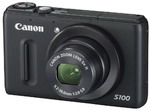Tuesday, December 21, 2004
Photo 101 - Camera Controls
Posted by Lee Yuan Sheng in "THOUGHT" @ 10:00 AM
To those who have read the previous article and have nodded their heads and said, I agree, but I still don't understand a lot of things - don't worry! In the following articles I'll discuss a bit on the technical bits in easy to understand terms, on what they do, and how you can use that knowledge to improve your photos. While you might not become an instant professional, with a bit of thinking, you should be able to add some valuable skills to your arsenal of photography knowledge.
I'll start by examining the few controls found on digital cameras over the next few articles. Some are new to the digital domain, while others come from cameras hundreds of years old. All will have an effect on your photos, but I must stress that you don't have to bother yourself with most of them if it's too much for you. Take your time to understand how they all work, and feel free to post in each article's respective thread if you need to ask questions!
The Zoom Control
It might come as a bit of a surprise that I'll start with this control first, instead of aperture and shutter speed controls. The reason is three-fold: not all cameras have manual exposure controls; exposure controls can be automated, but the photographer still has to make a choice with the zoom control; and the zoom control has a far greater effect on photos for most newcomers than the exposure controls. It helps the photographer to frame the photo, and I find that a poorly exposed photo is the lesser of two evils compared to a poorly framed and composed photo.
The Basics
Zoom lenses are basically lenses in which you can change the focal length of the lens for a given range. These are extremely handy to have, especially when most of us either have a camera that has a fixed lens or don't wish to invest in too many lenses.
It wouldn't take a genius to figure out that the wide angle setting allows you to work at a closer distance as well as getting more of the view in (hence wide angle)...

Taken at a focal length equivalent to 28mm on a 35mm film camera.
... whereas the telephoto end is used to bring distant subjects closer.

Taken at a focal length equivalent to 400mm on a 35mm film camera.
However there a couple of properties associated with focal lengths, one which is directly related, and that is the Field of View (FOV), and one indirectly related, and that is perspective.












